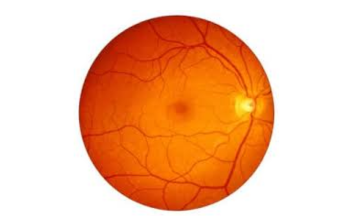- Email: info@swarupeye.com
- Hyderabad
- Call: +918886309030
Retina and Uvea
Retina and Uvea
The retina is a layer of cells at the back of your eyeball that converts light into nerve signals. It then sends those signals along your optic nerve to your brain, where they are processed into images.
The uvea is a vascular layer of tissue that lies between the retina and the sclera (the white part of the eye).
Both the retina and uvea are essential for healthy vision. Any damage to these structures can lead to vision loss or blindness.

Common Eye Conditions Affecting the Retina and Uvea
- Age-related macular degeneration (AMD): A condition where the macula deteriorates, leading to blurred or distorted vision.
- Diabetic retinopathy: Damage to the retina's blood vessels due to diabetes, which can cause vision loss.
- Retinal detachment: A separation of the retina from its underlying layer, which requires immediate treatment.
- Retinal vascular occlusions: Blockages in the retinal blood vessels that can lead to sudden vision loss.
- Macular holes and epiretinal membranes: Affect the macula, leading to distorted vision, often requiring surgical intervention.
- Retinitis pigmentosa: A genetic disorder causing progressive damage to the retina, especially the rods.
- Hypertensive retinopathy: High blood pressure-related damage to the retinal blood vessels.
- Retinal tears and holes: Small breaks in the retina due to thinning of retinal tissue.
- Uveitis: Inflammation of the uvea, causing pain, redness, and blurred vision.
Diagnosis
Our team uses advanced diagnostic tools to identify retinal problems early. These include:
- Slit-lamp examination: Used to inspect the anterior segment of the eye and check for signs of inflammation.
- Indirect ophthalmoscopy: A test that involves dilating the pupils to examine the complete retina.
- Blood tests and imaging: Additional tests to identify underlying causes like infections or autoimmune diseases.
- Ultra wide view Fundus Photography: High-resolution images of the retina to detect abnormalities.
- Optical Coherence Tomography (OCT): Non-invasive imaging to evaluate retinal layers.
The Importance of Early Diagnosis and Treatment
Early detection and intervention can help prevent vision loss. If you notice any visual disturbances, consult our specialists immediately for a comprehensive evaluation.
Why Choose Swarup Eye Centre for Retina and Uvea Care?
- Expert Specialists: Our experienced ophthalmologists specialize in retinal and uveal disorders.
- State-of-the-art Technology: Advanced diagnostic and surgical equipment for accurate detection and treatment.
- Personalized Treatment Plans: We tailor treatments to each patient's unique condition.
- Comprehensive Care: We collaborate with other specialists to manage complex cases effectively.
Schedule a Consultation
Visit Swarup Eye Centre today for a detailed eye examination and expert care for retina and uvea disorders. Our team is dedicated to preserving and restoring your vision.
